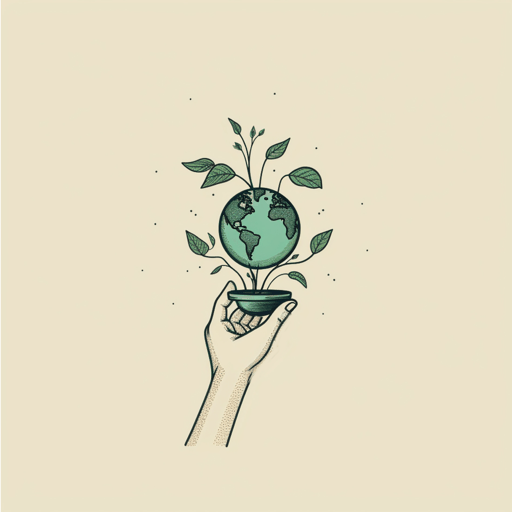110 pages • 3 hours read
Kim Stanley RobinsonThe Ministry for the Future
Fiction | Novel | Adult | Published in 2020A modern alternative to SparkNotes and CliffsNotes, SuperSummary offers high-quality Study Guides with detailed chapter summaries and analysis of major themes, characters, and more. For select classroom titles, we also provide Teaching Guides with discussion and quiz questions to prompt student engagement.
Summary and Study Guide
Overview
The Ministry for the Future is Kim Stanley Robinson’s 2020 climate fiction novel in which he offers a speculative vision of what the response to climate change will look like during the 2020s through the 2040s. Using multiple genres and voices, Robinson builds a world in which bureaucrats, ecoterrorists, refugees, scientists, farmers, and ordinary people collectively stave off disaster for a while. Robinson has won major awards in the science fiction industry. Ministry for the Future is a 2021 Locus Award nominee for Best Science Fiction Novel. This guide is based on the 2021 Kindle book edition from Amazon.
Plot Summary
In 2025, a combination of high humidity and high temperatures kills tens of millions of people in India, setting off decades of struggle to slow the heating of the planet by carbon emissions. Mary Murphy is selected to lead the Ministry for the Future, a body created by the Paris Climate Accords to advocate on behalf of future people who will bear the consequences of inaction now. The tragedy in India galvanizes her to step up her efforts to address climate change using the courts, economic incentives and taxes, and the creation of carbon coin, a currency created by sequestering carbon. Meanwhile, an Indian group called the Children of Kali engages in acts of ecoterrorism against governments and individuals who pollute the environment. The threat of their violence helps a new Indian governing coalition to turn Indians’ many resources to addressing climate change.
Frank May, a development worker in India at the time of the heat wave, is the sole survivor in the town where he worked. Frank is so traumatized by his experiences that he commits to using violence to address climate change. The Children of Kali reject his offer to kill on their behalf, however, so he goes to Europe to do what he can there. He later attacks and accidentally kills a man (Edmund) who is a member of the elite. Desperate to make a difference, he kidnaps Mary and forces her to listen to his argument for engaging in decisive, bold action, even if that means violence, to avoid catastrophic climate change effects.
Mary escapes Frank, but his arguments leave a mark on her. She instructs Badim Bahadur, her chief of staff, to set up a” black wing” to carry out illegal actions on behalf of the ministry. He tells her they already have one, and everyone assumed she knew they had one. He refuses to tell her what the black wing has been doing, however, to protect her should the black wing’s activities be discovered.
Frank manages to escape capture after holding Mary hostage and begins working in camps that house the many refugees to Europe from countries indirectly or directly destabilized by climate disasters and inequality. He marries Syrine, a woman from one of the camps where he volunteers, but their marriage breaks up when Frank’s fits of temper scare Syrine and her daughters. Frank is arrested and imprisoned for killing Edmund and holding Mary hostage. He and Mary strike up a strange friendship as she visits him in jail, and he continues to talk to her about climate change, inequality, and refugees. They remain friends even after his release.
Over many decades, ecoterrorist acts by the Children of Kali or other groups diminish reliance on fossil fuels by making it unsafe to fly or to use container ships. The group shuts down mining operations that are exploitative. The ministry is bogged down in bureaucratic work with central banks to put pressure on users of fossil fuels to stop polluting, but they also support other successful projects. They work on open-source social media, establishing a plan for governing when governments collapse due to climate disasters, work on lowering sea levels by slowing down the rate at which glaciers slide into the sea, and get reluctant countries to adopt carbon coin. Over the decades, this work pays off, but the impact of carbon dioxide already in the atmosphere continues to cause the collapse of ecosystems and economies.
The turning point for the effectiveness of the Ministry for the Future comes after an unknown organization bombs and destroys their headquarters. The Swiss government steps in to protect its reputation, and their backing gives Mary more leverage to force banks and countries to act. The creation of new weapons technology makes traditional military forces obsolete. As climate change causes governments to collapse, more collective forms of governance and economic organization work, eventually resulting in the end of capitalism as it is traditionally defined.
By the 2040s, the rate of carbon emissions has slowed enough that the amount of carbon dioxide in the atmosphere is headed in the right direction. Robinson reveals the Badim is the real founder of the Children of Kali, although he seems to have lost control of the group. Problems stemming from economic inequality also persist, however. Frank dies of cancer, and Tatiana, one of Mary’s friends and the legal counsel for the ministry, dies by assassination. Mary meets Arthur “Art” Nolan, a friend of Frank’s and an airship captain, during Frank’s final months. Mary retires as ministry head, and Badim takes over. She strikes up a romantic relationship with Art. The novel ends with the two of them together on carnival night in Zurich.
Related Titles
By Kim Stanley Robinson



